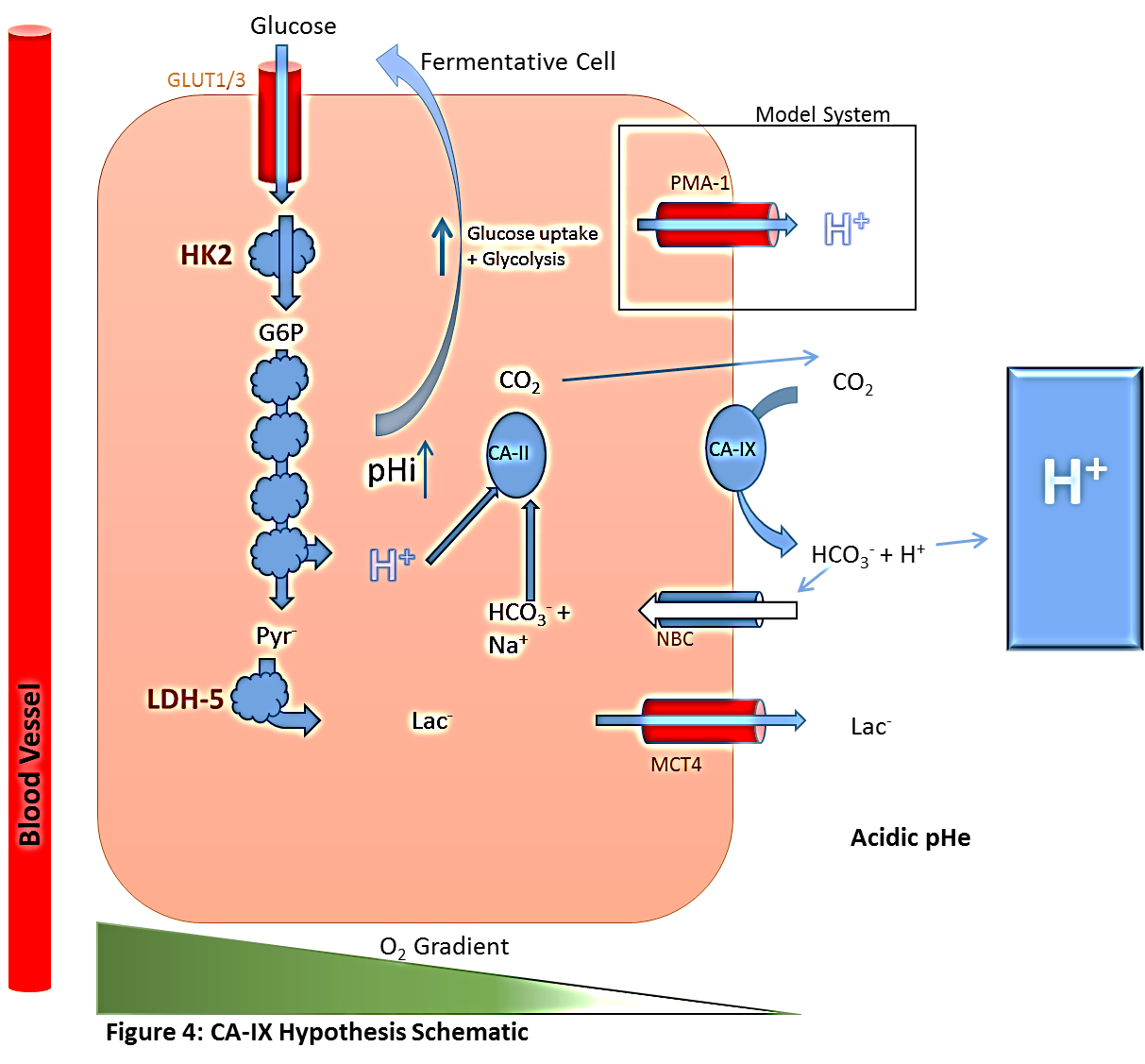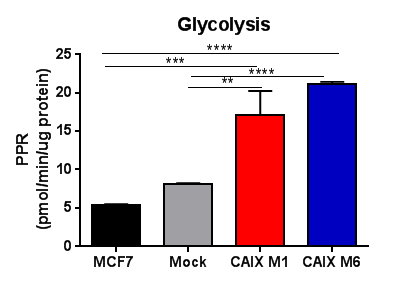Carbonic Anhydrases and pH
Project Summary:
Warburg’s Paradox: Export of acid drives aerobic glycolysis and metastasis
Aerobic glycolysis (the Warburg Effect – W.E.) is a hallmark of cancer associated with increased aggression, invasion, and metastasis. Glycolysis is known to acidify the tumor microenvironment through secretion of lactic acid, and acidosis is commonly seen in invasive phenotypes.
Studies using yeast H+-ATPase (PMA 1), which pumps protons into the extracellular milieu, have shown that proton production alone is sufficient to drive glycolysis in a lowly glycolytic cell line and increase metastasis. Carbonic Anhydrase IX (CA-IX) is a protein known to acidify the microenvironment through the reversible hydration of CO2 into H+ and HCO3- and is known to be transcriptionally regulated by hypoxia inducible factor (HIF). Clinically, high expression of CA-IX results in poor prognosis, decreased progression free survival, and decreased overall survival. Histologically however, there is expression of CA-IX without markers of hypoxia, such as pimonidazole co-staining, and this leads us to consider CA-IX a pseudohypoxic marker. Due to the clinical need for further understanding CA-IX and the dependence of tumors on glycolysis, we chose to further evaluate CA-IX’s role in metabolism and its potential to be a clinical therapeutic target.


Hypotheses
- Proteins that control acid efflux, such as CA-IX, drive the Warburg Effect by creating an intracellular proton deficit that is replenished by fermentation;
- Extrusion of protons is the force driving glucose uptake, rather than proton being an epiphenomenon of elevated fermentation.
During this project we have over-expressed PMA1 or CA-IX in a lowly aggressive, breast cancer cell line MCF-7. Carbonic Anhydrase IX expression or PMA 1 expression is sufficient to induce a more glycolytic phenotype in a lowly aggressive breast cancer cell line MCF-7. This phenotype is not reliant on hypoxia and strengthens the argument that CA-IX can be used as a pseudohypoxia marker at the invasive edge of cancer. CA-IX expression enabled MCF-7 cells to form spheroids. This insight into CA-IX could provide an alternative strategy to therapeutically target acidosis and metabolism of cancer. Future directions will focus on the in vivo consequences of CA-IX expression in metastasis, tumor pH and, tumor metabolic phenotype.
Project Members
Shonagh Russell
Graduate Research Student
Pedro Enriquez Navas, PhD
Research Scientist
Jan Poleszczuk, PhD
Dominique Abrahams, MS
Research Associate
Moffitt Cores: SAIL, Histology, Microscopy
